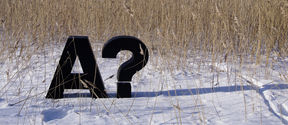Group flow: What is it and how to achieve it?
Do you know the feeling when the mind gets carried away and the outside world disappears? Ideas flow freely, work unfolds seamlessly and you experience a deep state of immersion. Even physical needs get forgotten, to the extent that you may not even realise being very hungry or that it has been hours since you last went to the bathroom. That's called flow.
The general belief is that the flow experience is activated when an individual experiences a psychological detachment without external stimuli. In other words this would mean that getting into a state of flow would require solitude. It is less often known that flow can also be experienced with others. Group flow (or team flow) occurs when members of a group can collectively immerse in an interdependent task that satisfies everyone involved. In today's age of individualism, it is encouraging to know that flow can also be achieved together with others.
What kind of a group is ideal for flow?
Group flow has traditionally been studied in sports and music. The purpose of the flow is indeed easy to understand when following a fast-paced ice hockey game or a concert by a full-scale orchestra. However, group flow can also be achieved when working or studying.
The Hungarian American psychologist Mihaly Csikszentmihalyi, the father of flow, has referred to a challenging surgery in his example of group flow. During the surgery, surgeons can feel that the entire surgical team functions as one organism, driven by the same meaningful task. In these situations, individuals seem to merge with the performance of the group while at the same time experiencing feelings of strength and harmony together.
To get to a state of flow, challenges and skills need to be in the right balance. If the task is too difficult, it can be hard to achieve flow. On the other hand, a task that is too easy can seem meaningless or even boring. In group work, tasks can become easier due to cooperation and new challenges may be needed to maintain the flow.
You might think that for the team to work together successfully, it is required to spend plenty of time together getting to know each other. However, according to research, the emergence of flow in different groups does not necessarily require a profound acquaintance with other team members, and flow can be reached quite quickly. This is because the creation of flow is more closely related to the task's nature than traditional group cohesion. Flow can be experienced in a wide variety of groups, and its emergence can be promoted with research-based tips.
How to build group flow?
Dutch researchers led by Jeff Van den Hout have listed the following prerequisites for the emergence of group flow: collective ambition, a common goal aligned with a personal goal, skill integration, open communication, commitment, and a sense of safety. In addition, they list the following qualities to support the emergence of flow in a group: holistic focus, a sense of unity, mutual trust, and a sense of joint progress. According to Van den Hout, these characteristics can only arise if the first-mentioned conditions are fulfilled. Other studies show that flow happens when people are allowed to use their own strengths and give their best to the group.
Jani Romanoff, professor of Maritime engineering, has successfully led groups at Aalto. He emphasises the importance of trust and thorough familiarity with group members. He shares an example where, as young assistant professors, he and a few of his colleagues took over an emergent research group including also graduate students. Not everything was clear at first, but they were very enthusiastic to try out different ways of working. One of the most important methods was emphasising successes and increasing self-confidence. This was practised regularly in weekly meetings. Eventually the number of successes and the amount of flow started to increase, so that even big problems began to seem small and solvable. Individual successes were contagious and lifted the mood of the whole group.
Communication plays an important role
Communication, both verbal and non-verbal, is vital for the creation of group flow. Only through discussion and information sharing will the group members know what the others are doing and what the essential coordinates of the task are. Immersing oneself in a task and achieving flow can be quite difficult if there is a lack of information sharing within the team. Communication within the group is also important when problems arise, otherwise the work may not progress, and it may be impossible to lose track of time if you need help from others but cannot connect with them.
While in a state of flow, a person may even seem absent from their surroundings, or it may be difficult to get in touch with them. An individual's state of flow can thus also make group flow difficult when a person is so deep - or high - in their flow that their messages would need an interpreter to translate the fast thought processes for others. In Romanoff's example, a challenge was to tell a graduate student that they were in such a high state of flow, that even the professors couldn't keep up with their thinking.
The effects of flow
Flow is often referred to as a positive experience. Flow has been found to not only improve performance, but also the group's happiness and positivity. Group flow has also been found to support risk-taking. However, the potential disadvantages or downsides of flow are rarely discussed.
According to Csikszentmihalyi, one thing that defines flow is that a person works with full intensity and capacity when experiencing it. Aalto's Jani Romanoff comments that, in a certain way, the state of flow is always also a state of stress, because once in flow, a person easily gives 100-110 per cent of their capacity to the task. This can be exhausting in the long run, and it leaves no reserve or resilience to cope with life's surprises and challenges. Recovering from group flow can therefore take some time. Studies have even found that, for example, a musician's risk of occupational accidents increases as the flow experience becomes longer.
It is therefore important to know how to 'get out' of the flow or to take a break from it. Romanoff also advises limiting the number of promises made to others and learning to tolerate the fact that promises cannot always be kept. It is good to understand that breaks from a state of flow are important and natural; otherwise, the periods after the joy and successful performance created by flow may appear ‘sticky’, unproductive, or even depressing.
For those who enjoy the individual flow, it can be a great idea to sometimes strive for a group flow. One American study found that the flow experience is at its best when experienced together.
References
Csikszentmihalyi, M. (1990). Flow: The psychology of optimal experience. New York: Harper and Row.
Liu, W., van der Linden, D., & Bakker, A. B. (2021). Strengths use and work-related flow: an experience sampling study on implications for risk taking and attentional behaviors. Journal of Managerial Psychology, vol.37, 1, 47-60.
MacDonald, R., Byrne, C., & Carlton, L. (2006). Creativity and flow in musical composition: An empirical investigation. Psychology of Music, 34(3), 292-306.
van den Hout, J. J., Davis, O. C., & Weggeman, M. C. (2018). The conceptualization of team flow. The Journal of psychology, 152(6), 388-423.
van den Hout, J. J., Gevers, J. M., Davis, O. C., & Weggeman, M. C. (2019). Developing and testing the team flow monitor (TFM). Cogent Psychology, 6(1), 1643962.
Walker, C. J. (2010). Experiencing flow: Is doing it together better than doing it alone?. The Journal of Positive Psychology, 5(1), 3-11.
Related news

Support for students impacted by the crisis in Iran
The university supports and helps students in dealing with the crisisMind & Study - toolbox for being well in studies (3cr) coming up
Popular course "Mind & Study - toolbox for being well in studies" will be organized in Finnish, English and Swedish in the 3rd and 4th period!
New macular degeneration treatment the first to halt disease’s progression
Aalto University researchers have uncovered a promising way to treat the dry form of the age- related macular degeneration (AMD) in the early diagnosis phase that could potentially stop its progression. The novel treatment approach aims to strengthen the protective mechanisms of affected cells using heat, explains Professor Ari Koskelainen.
Still time to register for Aalto walk & run event 20.9.2025
Join the whole Aalto community's free of charge outdoor sports event - sign up now!Related events at Aalto







